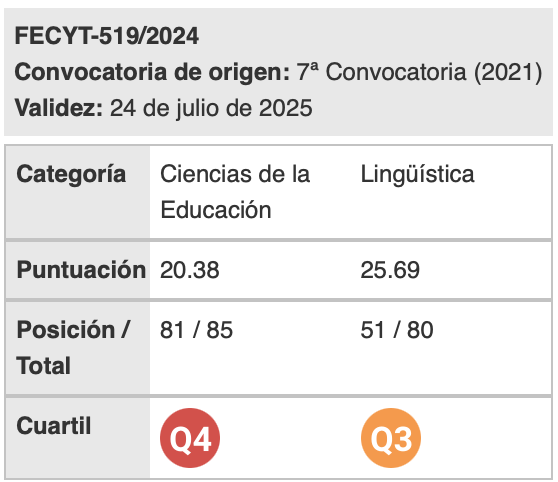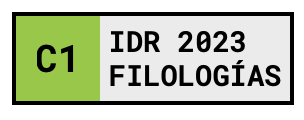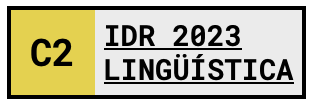The lexical approach: collocability, fluency and implications for teaching
Keywords:
lexical approach, collocations, formulaic language, noticing, fluencyAbstract
The lexical approach identifies lexis as the basis of language and focuses on the principle that language consists of grammaticalised lexis. in second language acquisition, over the past few years, this approach has generated great interest as an alternative to traditional grammar-based teaching methods. From a psycholinguistic point of view, the lexical approach consists of the capacity of understanding and producing lexical phrases as non-analysed entities (chunks). A growing body of literature concerning spoken fluency is in favour of integrating automaticity and formulaic language units into classroom practice. in line with the latest theories on SlA, we recommend the inclusion of a language awareness component as an integral part of this approach. The purpose is to induce what Schmidt (1990) calls noticing, i.e., registering forms in the input so as to store them in memory. This paper, which is in keeping with the interuniversity Research Project “Evidentiality in a multidisciplinary corpus of English research papers” of the University of las Palmas de Gran Canaria, provides a theoretical overview on the research of this approach taking into account both the methodological foundations on the subject and its pedagogical implications for SLA.
Downloads
References
Aitchison, J. (1996). Words in the mind- an introduction to the mental lexicon.
Oxford an New York: Blackswell Publishers ltd.
Chambers, F. (1998) What do we mean by fluency? System, 25(4), 535-544.
Cortina, B. (2009) Una propuesta didáctica para la mejora de la competencia conversacional de una LE mediante secuencias formulaicas. Didáctica, Lengua y Literatura 21, 99-115.
Deignan, A. et al. (1998). Lexis. Centre for English Studies. Birmingham: Uni- versity of Birmingham.
Ellis, N. (1997). Vocabulary acquisition, word structure, collocation, word-class, and mean- ing. Cambridge: Cambridge University Press.
Firth, J. R. (1951). 1957b Modes meaning. in Papers in linguistics. OXFORd Uni- versity Press. pp. 190-215.
Jakobson, R. (1959). lingüística y poética. En: Ensayos de Ligüística General, 347- 395 Barcelona: Ariel.
Lewis, M. (1993). The lexical approach: the state of ELT and the way forward. Hove, England: language Teaching Publicactions.
Lewis, M. (2000) language in the lexical approach. in teaching collocation: further developments in the Lexical Approach, Michael lewis (ed.) pp. 126-154. Hove: language teaching publications.
McIntosh, A. (1961). Patterns and ranges. Language 37: Harper and Row, New York. pp. 325-327.
Miller, J., and R. Weinert (1998). Spontaneous spoken language: syntax and discourse. Oxford: Oxford Clarendom Press.
Moon, R. (1997). Vocabulary connections: multi-word items in English. Cambridge: Cambridge University Press.
Moras, S. (2001). Teaching vocabulary to advanced students: a lexical approach. Karen’s Lingüistics Issues. July, 2001.
Moudraia, O. (2001). lexical Approach to Second language Teaching. www.cal.org/resources/digest/0102lexical.html
Nattinger, and DeCarrico (1992). Lexical phrases and language teaching. Oxford: Oxford University Press.
Newmark, P. (1988). A text book of translation. london: Prentice Hall international. Sinclair, J. (1991). Corpus, conocordance, collocation. Oxford: Oxford University
Press.
Schmidt, R. W. (1990). The role of consciousness in second language learning.
Applied linguistics, 11, 206-226.
Schmitt, N. (2000) Key concepts in ElT: lexical Chunks. ELT Journal 54 (4),
-401.
Thornbury, S. (1998). The lexical approach: a journey without maps? MET 7/4.
Tomlinson, B. (2003). Frameworks for material development. in B. Tomlinson (ed.) Developing materials for language teaching. (pp. 107-129). london: Continuum.
Trimble, L. (1985). English for science and technology. Cambridge University Press.
Willis, D. (1990). The lexical syllabus. Collins ElT.
Willis, D. (1997). Syllabus design and the pedagogic corpus. Vocabulary learning in a foreign language. Triangle 16. ENS Editions.
Wood, D. (2001). in search of fluency: What is it and how can we teach it? The Canadian modern language review 57/4, 573-589.
Wray, A. (2002). Formulaic language and the lexicon. Cambridge. Cambridge University Press.
Wright, B. (2001). Word association and second language learners’ responses. Centre for English language studies. Birmingham: University of Birmingham.
Downloads
Published
How to Cite
Issue
Section
License
Authors who publish with this journal agree to the following terms:
- Authors retain copyright and grant the journal right of first publication with the work simultaneously licensed under a Creative Commons Attribution License that allows others to share the work with an acknowledgement of the work's authorship and initial publication in this journal.
- Authors are able to enter into separate, additional contractual arrangements for the non-exclusive distribution of the journal's published version of the work (e.g., post it to an institutional repository or publish it in a book), with an acknowledgement of its initial publication in this journal.
- Authors are permitted and encouraged to post their work online (e.g., in institutional repositories or on their website) prior to and during the submission process, as it can lead to productive exchanges, as well as earlier and greater citation of published work (See The Effect of Open Access).

Revista de Lenguas para fines específicos is licensed under a Creative Commons Reconocimiento-NoComercial-SinObraDerivada 4.0 Internacional License.
























